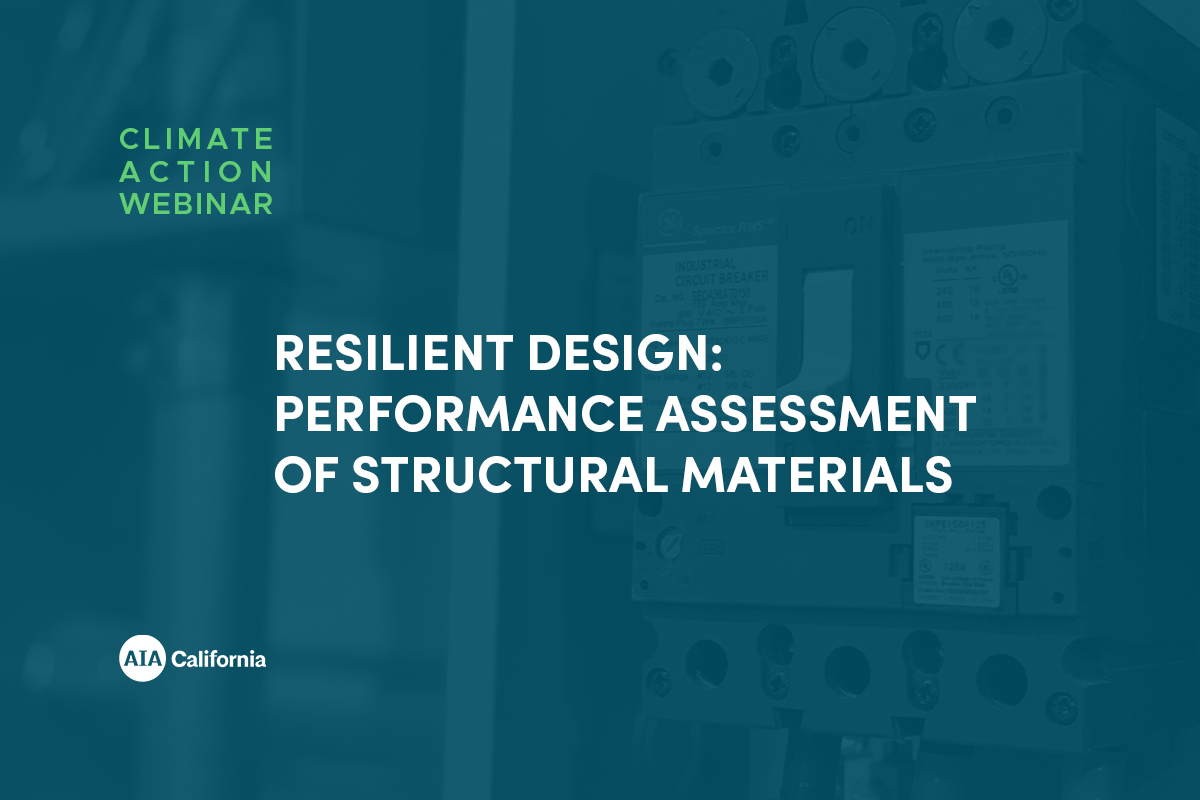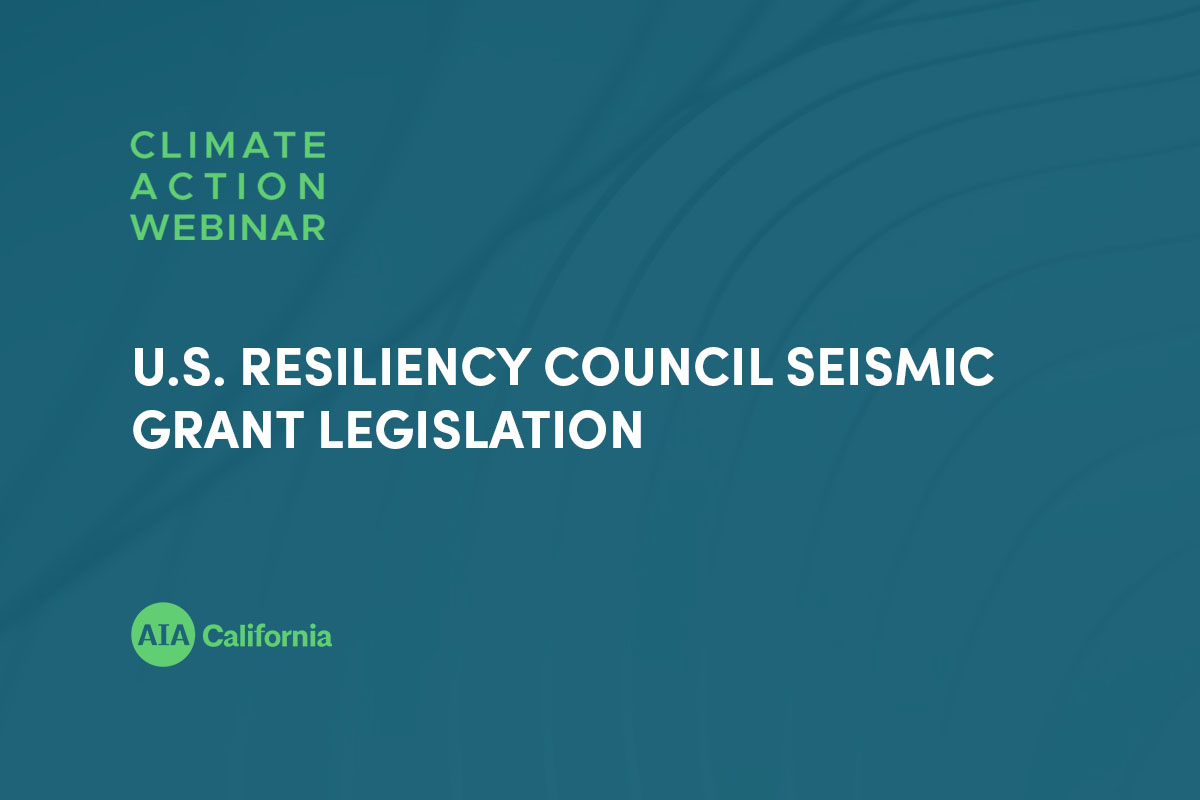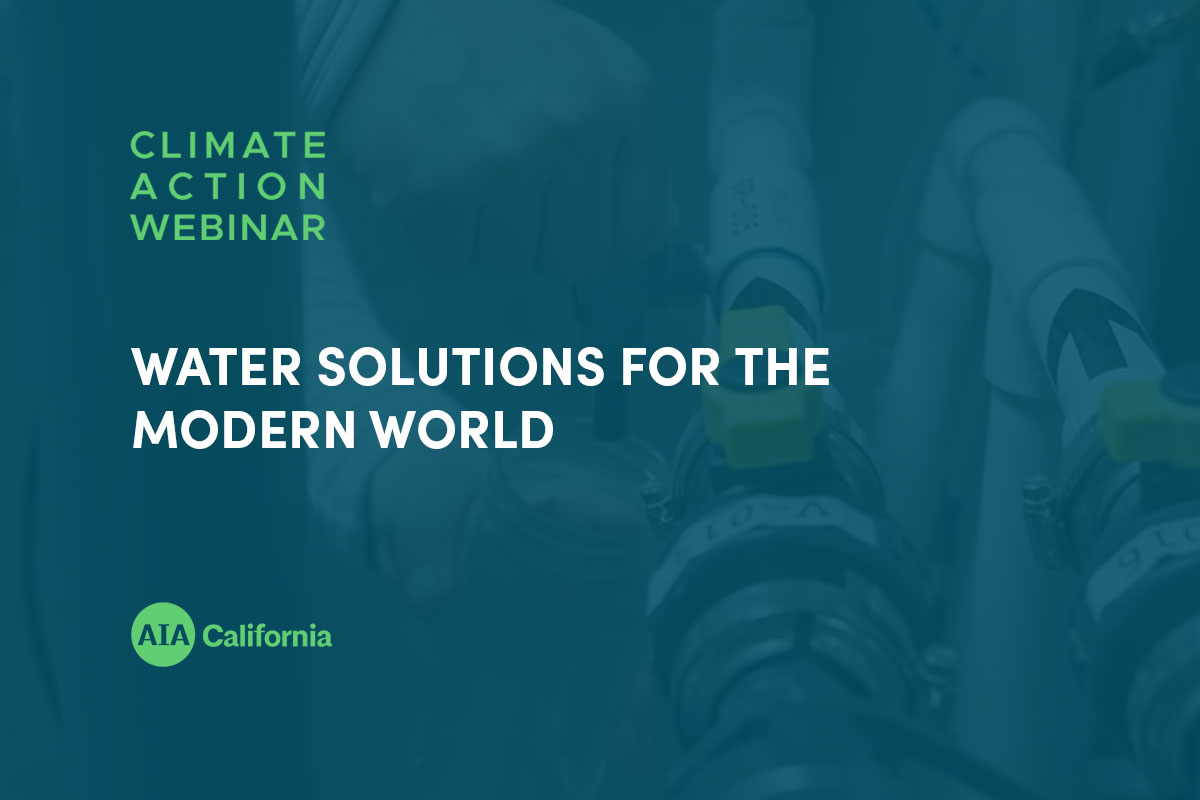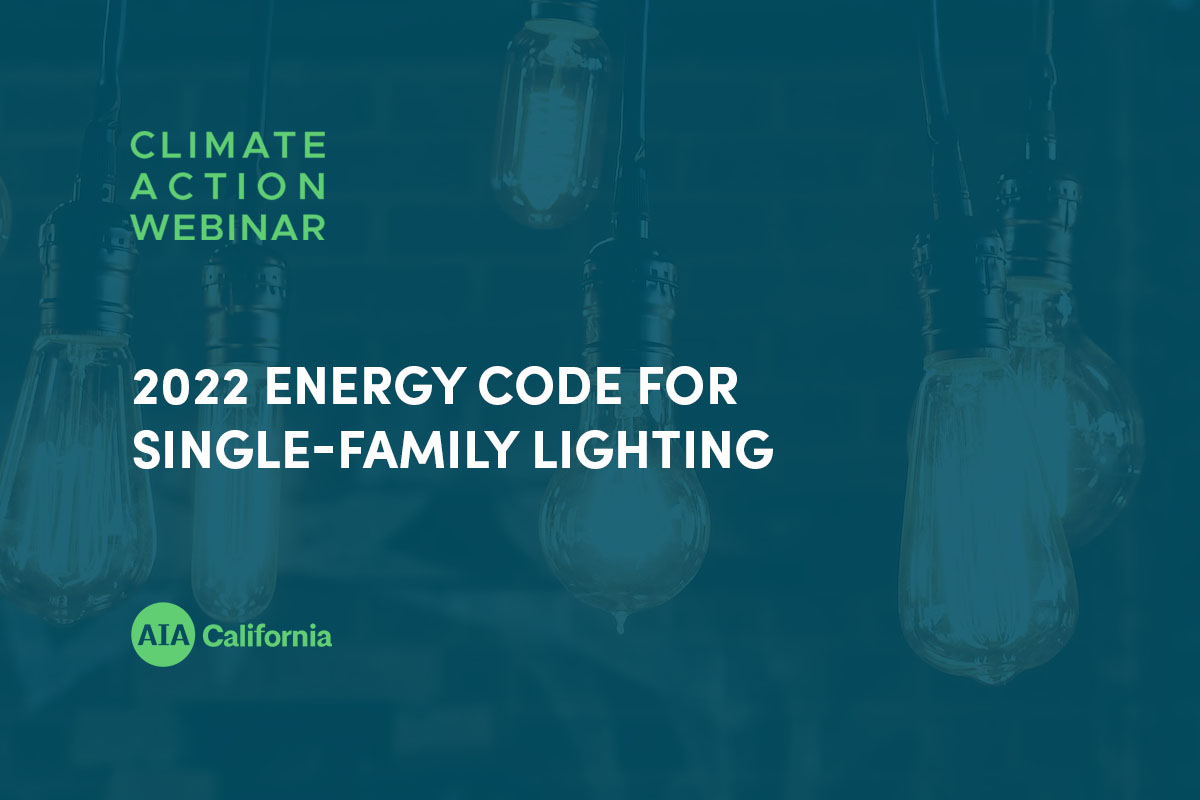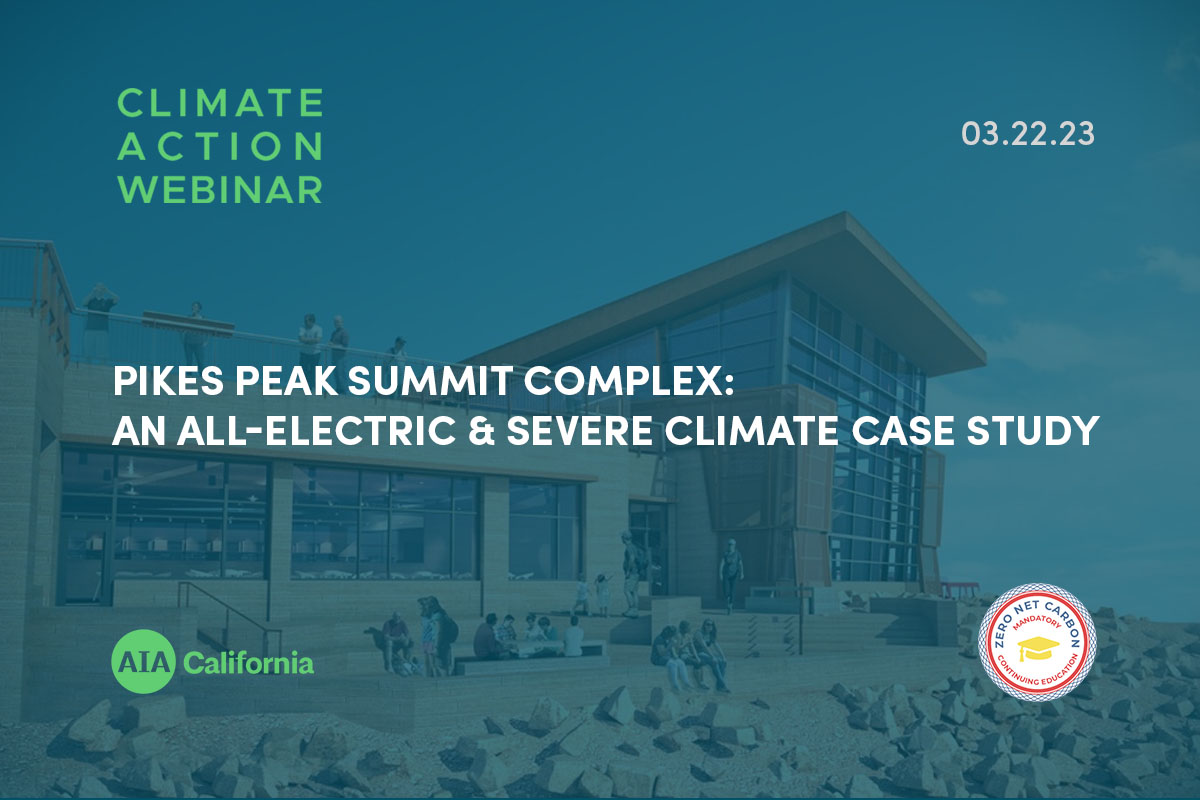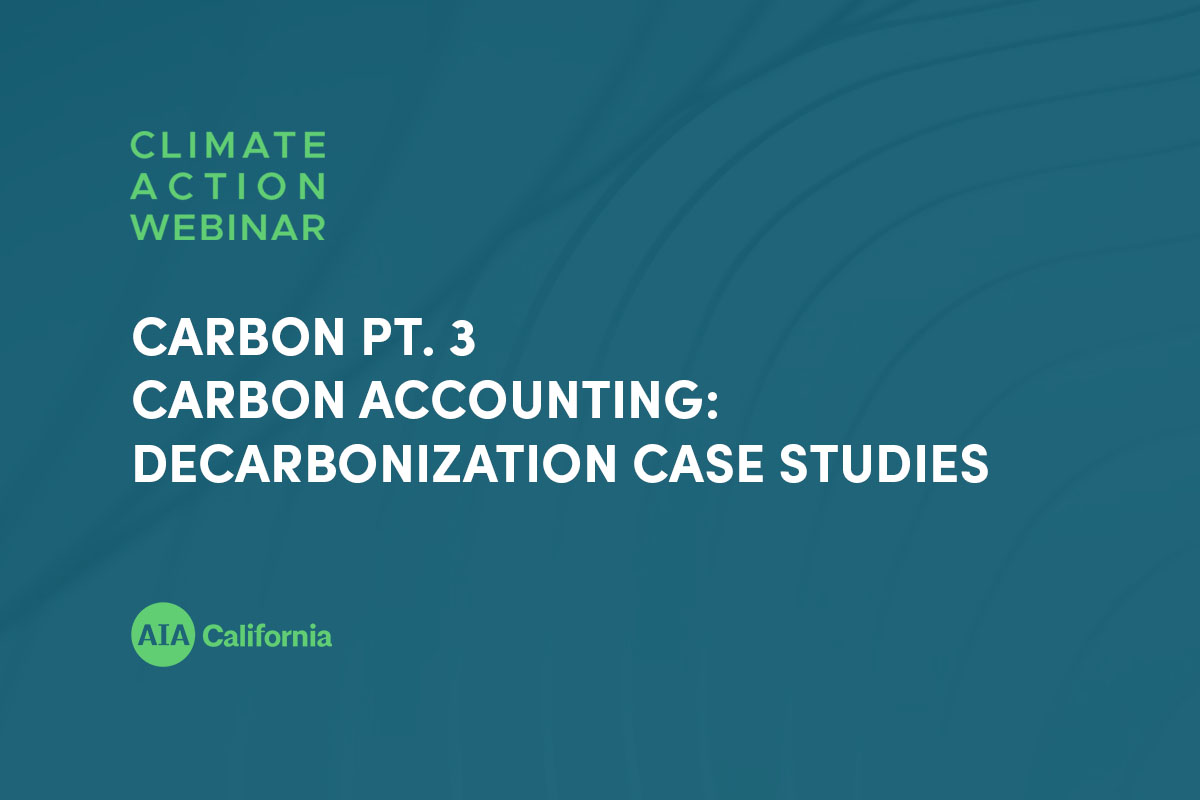Units: 1.5 LU/HSW (pending approval)Qualifies for 1.5hrs of ZNCD MCESpeakers:Brad Benke, AIA | Research Scientist, Carbon Leadership ForumJessica Martinez, PE, LEED AP | Sustainability Specialist, DCI Engineers Jacob Davis, AIA, LEED AP | Senior Associate, archimania Kate Diamond, FAIA, LEED AP | Civic Design Director, HDRINC Yunnan Allen, RA, NCARB, LEED AP | Senior Project Architect, HDRINC Matt Cunha-Rigby, RA, LEED AP, LFA | Sustainable Leader, HDRINC This is the final program in a 3-part series on Carbon Accounting made in partnership with the Carbon Leadership Forum.Designers understand the imperative of achieving net-zero carbon emissions on their projects. But how do we actually get there? In the final installment of this three-part series on carbon, three design firms will share examples of projects that made dramatic carbon reductions. The firms will share their processes for initial goal setting, the strategies employed throughout design, and the methodologies used for measuring and verifying their project impacts. Attendees of this session will get a first-hand look at how design teams are applying the concepts, tools, and strategies we’ve covered in this series to dramatically reduce or eliminate the carbon impacts of projects in the real world. Video coming soon. .elementor-widget-tabs.elementor-tabs-view-vertical .elementor-tabs-wrapper{width:25%;flex-shrink:0}.elementor-widget-tabs.elementor-tabs-view-vertical .elementor-tab-desktop-title.elementor-active{border-right-style:none}.elementor-widget-tabs.elementor-tabs-view-vertical .elementor-tab-desktop-title.elementor-active:after,.elementor-widget-tabs.elementor-tabs-view-vertical .elementor-tab-desktop-title.elementor-active:before{height:999em;width:0;right:0;border-right-style:solid}.elementor-widget-tabs.elementor-tabs-view-vertical .elementor-tab-desktop-title.elementor-active:before{top:0;transform:translateY(-100%)}.elementor-widget-tabs.elementor-tabs-view-vertical .elementor-tab-desktop-title.elementor-active:after{top:100%}.elementor-widget-tabs.elementor-tabs-view-horizontal .elementor-tab-desktop-title{display:table-cell}.elementor-widget-tabs.elementor-tabs-view-horizontal .elementor-tab-desktop-title.elementor-active{border-bottom-style:none}.elementor-widget-tabs.elementor-tabs-view-horizontal .elementor-tab-desktop-title.elementor-active:after,.elementor-widget-tabs.elementor-tabs-view-horizontal .elementor-tab-desktop-title.elementor-active:before{bottom:0;height:0;width:999em;border-bottom-style:solid}.elementor-widget-tabs.elementor-tabs-view-horizontal .elementor-tab-desktop-title.elementor-active:before{right:100%}.elementor-widget-tabs.elementor-tabs-view-horizontal .elementor-tab-desktop-title.elementor-active:after{left:100%}.elementor-widget-tabs .elementor-tab-content,.elementor-widget-tabs .elementor-tab-title,.elementor-widget-tabs .elementor-tab-title:after,.elementor-widget-tabs .elementor-tab-title:before,.elementor-widget-tabs .elementor-tabs-content-wrapper{border:1px #d5d8dc}.elementor-widget-tabs .elementor-tabs{text-align:left}.elementor-widget-tabs .elementor-tabs-wrapper{overflow:hidden}.elementor-widget-tabs .elementor-tab-title{cursor:pointer;outline:var(--focus-outline,none)}.elementor-widget-tabs .elementor-tab-desktop-title{position:relative;padding:20px 25px;font-weight:700;line-height:1;border:solid transparent}.elementor-widget-tabs .elementor-tab-desktop-title.elementor-active{border-color:#d5d8dc}.elementor-widget-tabs .elementor-tab-desktop-title.elementor-active:after,.elementor-widget-tabs .elementor-tab-desktop-title.elementor-active:before{display:block;content:"";position:absolute}.elementor-widget-tabs .elementor-tab-desktop-title:focus-visible{border:1px solid #000}.elementor-widget-tabs .elementor-tab-mobile-title{padding:10px;cursor:pointer}.elementor-widget-tabs .elementor-tab-content{padding:20px;display:none}@media (max-width:767px){.elementor-tabs .elementor-tab-content,.elementor-tabs .elementor-tab-title{border-style:solid solid none}.elementor-tabs .elementor-tabs-wrapper{display:none}.elementor-tabs .elementor-tabs-content-wrapper{border-bottom-style:solid}.elementor-tabs .elementor-tab-content{padding:10px}}@media (min-width:768px){.elementor-widget-tabs.elementor-tabs-view-vertical .elementor-tabs{display:flex}.elementor-widget-tabs.elementor-tabs-view-vertical .elementor-tabs-wrapper{flex-direction:column}.elementor-widget-tabs.elementor-tabs-view-vertical .elementor-tabs-content-wrapper{flex-grow:1;border-style:solid solid solid none}.elementor-widget-tabs.elementor-tabs-view-horizontal .elementor-tab-content{border-style:none solid solid}.elementor-widget-tabs.elementor-tabs-alignment-center .elementor-tabs-wrapper,.elementor-widget-tabs.elementor-tabs-alignment-end .elementor-tabs-wrapper,.elementor-widget-tabs.elementor-tabs-alignment-stretch .elementor-tabs-wrapper{display:flex}.elementor-widget-tabs.elementor-tabs-alignment-center .elementor-tabs-wrapper{justify-content:center}.elementor-widget-tabs.elementor-tabs-alignment-end .elementor-tabs-wrapper{justify-content:flex-end}.elementor-widget-tabs.elementor-tabs-alignment-stretch.elementor-tabs-view-horizontal .elementor-tab-title{width:100%}.elementor-widget-tabs.elementor-tabs-alignment-stretch.elementor-tabs-view-vertical .elementor-tab-title{height:100%}.elementor-tabs .elementor-tab-mobile-title{display:none}} Additional Resources Additional Resources Presentation_CLF Pt 3 Case Studies_HDR and archimania

